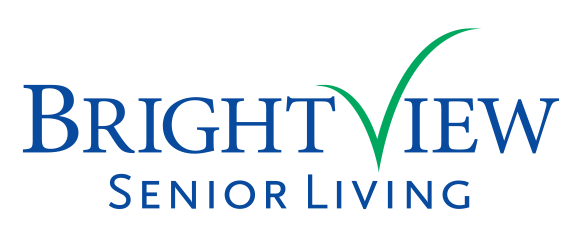Roche Transforms Processes That Help Millions of Patients Globally
Today, teams at Roche are developing and implementing innovative diagnostic systems that help millions of patients all over the world. Yet rapid changes in technology and within the healthcare industry mean that the teams at Roche must also drive innovation in their processes to stay competitive and keep up with demand.

Improving Program Productivity By 30%
Roche Diagnostics runs their Customer Implementation PMO on Smartsheet to save time, ensure airtight consistency, and ultimately improve the patient experience.
"We’re actually managing 30% more projects with the same number of project managers as we were before we implemented Smartsheet."
IT Account Manager for Commercial Operations
An Increasingly Complex Process
Based in Indianapolis, the Roche Diagnostics Implementation Program office serves the needs of a diverse and expansive customer base in North America. The team realized that in order to best serve their customers, which range from personal physicians to large national laboratories, research institutions and academic centers, they needed to address rapid changes in technology, customer expectations, and economic pressures. Their customers deserve transparency with regard to everything related to diagnostic testing — and they want results and consolidated real-time information delivered more rapidly.
“The lab directors and lab managers are consumers, too, and they want to have that same [consumer] experience when they’re at work. There’s just not much of a difference between business-to-business and business-to-consumer anymore,” says Michael Ghrist, IT Account Manager for Commercial Operations at Roche Diagnostics. For example, Roche’s customers expect immediate confirmation and real-time updates of order status, and full transparency into their order.”
At the same time, economic pressures are compounding. Hospital laboratories are being asked to run more tests and produce results more quickly with less spend and fewer staff. To support these changes, Roche is developing instruments that produce highly accurate results faster, generating informed decisions for medical action. These instruments also automate the work previously done by qualified technicians who are increasingly hard to find in today’s market, such as performing less complicated laboratory tests on tissue, blood, or other bodily fluid specimens. It’s a new approach for many of their customers.
“One of the biggest challenges that our customers face is changing out their entire lab equipment, their lab processes, moving into something that’s completely different,” says Ghrist. “The best way to overcome that is to have a very structured, disciplined process in terms of how you do implementations.”
For the Roche team, implementations consist of working with the customer to ready them for the implementation including workflow and physical changes, the equipment installation and setup of the new medical diagnostics equipment for customers. Customers are seeking a partner in medical diagnostics, and that is what Roche is seeking to provide.
“When we’re doing an implementation, we have to keep our customers producing results through the entire process,” says Stacey Bogardus, Implementation Program Director at Roche. “A patient is at both ends of that solution. They’re getting their blood drawn, it’s going to the lab, and there’s a result that drives a treatment option. It’s not like we can just shut down the lab until we’re done with our project.”
With over 600 projects at one phase or another at any given time — and with those projects increasing in complexity — the implementation team at Roche needed to standardize their process to help them scale.
“The equipment was getting much more complex and therefore the implementations were getting much more complex. Being able to communicate with the customers, being able to coordinate resources, was a real challenge,” says Ghrist.
The team was also challenged by the disparate sources of information that teams had to work with to complete implementations. For example, says Ghrist, “A project manager would have multiple partners and platforms, each of which contained partial information, and when we won a deal, they would have to manually go capture that information to create the project plan, to get the resources assigned.”
A “Powerful, Transforming Experience”
To better support their customers, the team at Roche needed a way to centralize information and plan and track implementations. Smartsheet was an obvious partner due to the company’s innovative mindset and agile spirit of creating new technologies and customer specific platforms.
“We wanted a technology partner that is innovative, that is looking to solve problems that genuinely make a difference,” says Bryan Langford, Vice President of Commercial Operations. “Not simply to provide a product, but to be a partner that would understand our business and the solutions that we are trying to provide to propel our business into the future and to help our customers. We found that Smartsheet was that partner.”
And the benefits have been significant. “Smartsheet has been an enabler for us to start that journey with a standardized, consistent, transparent and collaborative framework that allows us to move through that process — always hand in hand. And that has been a powerful, transforming experience for our customers,” says Langford.
“Smartsheet allowed us to take that information and automate it, so we get direct feeds now from our internal systems. It’s all consolidated, templates are created, drafts are created, and a project plan,” says Ghrist. “Where it used to take a week, two weeks sometimes, to get all of that information together. Now it happens in an automated fashion within a matter of hours.”
“Whether you’re a project manager, managing a very large complex project, or you’re a service manager, managing a small, relatively simple project, everyone has a similar tool [that] looks the same, operates the same,” says Joel Cox, Implementation Program Director. “And internally, we can extract [implementation project] data, and we can report that, consistently, across all projects.”
“Through our dashboard, for example, we are able to now see one status of all projects and a heat map of what needs the most attention and why,” adds Langford. This standardization and increased visibility enables the team to accomplish even more for their customers.
“We’re actually managing 30% more projects with the same number of project managers as we were before we implemented Smartsheet,” says Ghrist. “So that’s a significant, real-time savings back to the business.”
Not only is the team saving time with Smartsheet, they’re also improving the implementation experience for other teams across the organization, as well as their customers. “It’s given us a single source of truth, whether it’s the customer, the implementation director, our service and support team, or our sales team. Regardless of who’s looking at the project plan, we’re all seeing the same information,” says Bogardus.
“Our processes and our tools are enabling us to be more thoughtful in how we phase that implementation, how we plan for it, and how we make sure that we are keeping the work moving through the lab while at the same time implementing the new solution,” says Bogardus. “And ultimately, that’s what it’s all about, because the patient is always at the other end of everything we’re doing.”
Subscribe to the Smartsheet IT Newsletter for tips, strategies, and ideas focused on helping IT professionals increase their impact on their business.
For more information about this story, please see our case study.




